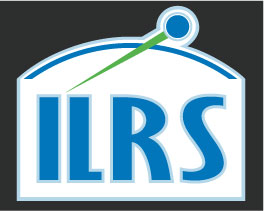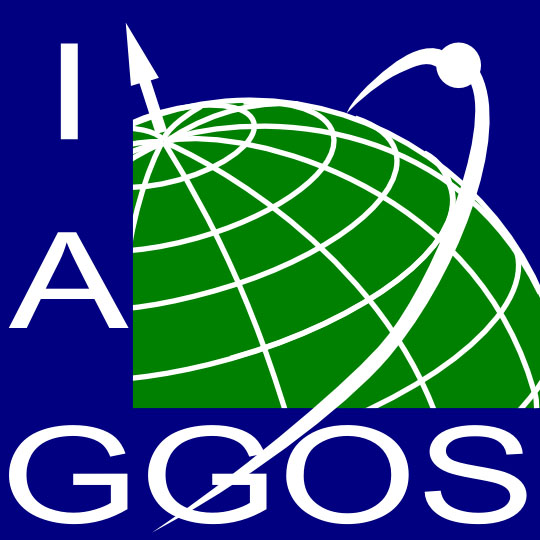Quick Links
ILRS Governing Board Meeting
October 09, 2002
12:00 - 03:00 p.m.
Minutes
| Attendees: | M. Pearlman | W. Gurtner |
| G. Kirchner | J. Degnan | |
| R. Noomen | P. Shelus | |
| C. Noll | D. Carter | |
| G. Appleby | J. McGarry | |
| J. Luck | U. Schreiber | |
| H. Kunimori | W. Seemueller |
Prior to the "official" start of the meeting, discussions on the 13th International Workshop on Laser Ranging and ILRS meetings in general were conducted.
Many attendees recommended that the laser ranging workshop should be expanded to five and one half days, e.g., a full day on Friday and a half-day on Saturday. The Saturday session should be strong enough to encourage people to stay. Working group meetings could perhaps be held during the day leaving evenings free.
The ILRS needs to find another venue to have ILRS meetings in the years between the laser ranging workshop. The ILRC (International Laser Radar Conference) is laser technology oriented and meets every year. The annual SPIE meetings are another possibility. If possible, meetings should be separate so that ILRS attendees do not have to register for the main conference if not interested. However, the ILRS may not be able to pay for conference rooms in any other way than to have active participation (i.e., full or partial registration) in the associated conference. Pearlman questioned if the full ILRS membership needs to meet twice per year, or whether we would be better served by smaller, more focussed meetings in the off-years. The general assembly meeting at EGS should be continued.
As for the laser ranging workshop, many thought we should to return to the "workshop" environment. The Science Session at the Washington workshop may have been too long, taking a full day. The content was important to present, but the details may be more appropriately present at an EGS-timeframe session. The presentations from the Science Session at the workshop will be issued as a hardcopy report.
The ILRS AWG has been meeting for two days about every six months. This has been critical to get work going for this group.
Gurtner is thinking of organizing a EUROLAS meeting next year on a specific topic.
Degnan started the meeting with a review of the agenda and current standing of the Governing Board. Noll distributed information packets to attendees. Pearlman reviewed the agenda for the General Assembly on October 11. He stressed the need to address recognition of the services in scientific papers; this issue should be brought to the attention of the IAG governance to make the scientific community generally aware. Gurtner does not think that this can be legislated by the IAG Secretary General. Pearlman says this is not an issue of enforcement but awareness by the scientific community. An SLRMail to make scientists aware of the importance of mentioning the archives could be issued by the CB. ILRS web pages and data centers should be updated to include requests for citation in scientific publications and perhaps even provide the citation.
Action: Issue an SLRMail concerning citation of the ILRS in scientific publications. Update the ILRS website with citation information for authors.
Action: Request Hermann Drewes, the IAG representative on the ILRS Governing GB, to bring the service recognition issue to the attention of the IAG governance.
Working Group Reports
Kunimori reported the status of the Mission Working. The group met on October 8. The AWG would like to see the increased ETALON (campaign) tracking priority put on a permanent basis. There has been a noticeable drop off in the ETALON tracking level compared to last year, perhaps due perhaps to weather. The CB was requested to ask the stations to make the best effort possible. The LRE campaign last year was not much of a success; only Grasse and Yarragadee were able to get any SLR data. NASDA and CRL have requested another campaign this year, but the Missions Working Group has set some prerequisites that need to be addressed first. The satellite tracking priority list was discussed; dynamic setting of priorities sounds good but is difficult in reality. A study group with representation by the stations and the analysts should be organized to seek a practical method. Both ICESat and ADEOS-2 may have tracking restrictions due to on-board optical sensitivities; the projects need to assess the risk and request a workable operations plan. A request to extend the Reflector campaign has been made by Dr. Parkhomenko. (A report was presented at the laser workshop the following day) Cyrosat (2004), ANDE (2003), GP-B (2003), NPOESS (2013) are all upcoming missions.
Action: Request GB approval for permanent increase of the ETALON-1 and -2 priorities.
Action: Request GB approval for continuation of the Reflector Campaign.
Action: Request GB approval for another LRE tracking campaign following sufficient input from mission contacts.
Seemueller reported on the Data Formats and Procedures Working Group. Riepl will meet later in the week with members of the Refraction Study Group to discuss updating the refraction model to accommodate tracking down to ten degrees, as requested by the analysts. Some stations may require special approvals to track this low. The CB needs to be stricter with station requirements; some rules are being neglected. The Prediction Format Study Group has made progress and will report at the workshop. Data centers have now made provision to accept two-color data. A separate meeting has been scheduled to discuss full-rate format and the inclusion of calibration data in the data flow.
Gurtner reported the results of the Networks and Engineering Working Group meeting. The site log database is more or less complete with the information organized in an extensive Excel spreadsheet. The update procedures need to be finalized and posted on the web. The bibliography is available on the web. The working group is working on a web based knowledge database including the technical reports from the workshop proceedings; they plan to add a section on "hints and tips on hardware components". The stations tell us that the weekly reports generated by various analysis centers are difficult to interpret, because of different formats, contents, interpretation, agreement, etc. The working group proposed that the stations prepare a "wish-list" of things they would like to see in a report. A discussion of error detection followed, who, when, what level. Although the analysts should develop a single comprehensive report for the stations, a report with definitive results may be illusive, and it would certainly not be a substitute for on-site diagnostics. The workshop session on station operations may generate new actions for the working group.
Action: Query the stations on diagnostic needs from the CB and the AWG.
Noomen discussed the results of the Analysis Working Group meeting held October 4-5 at Honeywell with eighteen participants. The Pilot Project Harmonization has a goal to make QC results and reports (including the performance report card) more consistent. The AWG is aware of the problems stations are having in interpreting the weekly reports. Analysts have been strongly encouraged to switch to the ITRF2000; so far about half of the analysis groups have made this change. CSR and DUT have not yet switched due to the large historic archive of data but they plan to make the change by November 2002. There will still be differences between bias reports, but results should continue to converge. The Benchmarking Pilot Project, invoked in Nice 2002, uses one month of LAGEOS-1 data in 1999 to allow analysts to check and compare their software and estimation results (to detect software and data treatment errors and discrepancies). The purpose of the project is not to calculate the best orbit, but to generate the most consistent orbit as a quality check of software. Nine groups have submitted results thus far. First results showed that residuals diverged as much as several meters, but with computation of mean residuals and orbital smoothing, agreement down to fractions of a mm has now been achieved. Looking in more detail, the refraction corrections are consistent to 0.2 mm and the relativity corrections are consistent to 0.1 mm. Future plans include refining the project description, re-analysis, and the development of a reference solution. Another project is the "positioning + earth orientation" project, generating solutions for EOPs and station coordinates, with a goal of developing an official ILRS product. Customers for this project would include the IERS Bulletin A and the ITRF. Twelve groups have contributed to this project thus far. The AWG requested the ETALON campaign in 2001 for the improvement of the EOP solutions, GM, and station characterization. The first campaign was from April 2001 to April 2002 with a continuation from May 2002 through October 2002. With the inclusion of the ETALON data (in addition to LAGEOS data) the rms of the LOD parameter has decreased from 0.162 msec to 0.099 msec. The AWG requested a continuation of ETALON tracking at the increased priority level. The GB members agreed that the results from ETALON looked promising and agreed to permanently increase the priority of ETALON ahead of GPS and GLONASS. The AWG will soon release an ILRS Call for Participation (CFP) to generate daily X/Y-pole, LOD as contributions to IERS Bulletin A and daily X/Y-pole, LOD (28-day arc), and coordinates. Two types of contributions are solicited, data reduction and combination. The CFP will be issued November 1, 2002. Participants will have to pass criteria set by the results of the Benchmark Project. A test period for participants will be held, and in the May 2003 timeframe a main combination center will be selected as well as back-up combination centers. The AWG requested approval on the CFP. The GB agreed that the CFP was within the original charter to the AWG to develop ILRS solutions for customer use and therefore additional authorization to proceed was not required.
ILRS Annual Report
Noll presented the plans for the next edition of the ILRS Annual Report series (2002 summary). The next report will be much shorter and thus could serve as the basis for the ILRS contribution to the CSTG Annual Report. Each coordinator/chair will be asked to provide a one-page summary of the year's activity for his/her particular area. The 2001 ILRS Annual Report should be published shortly (awaiting the few last inputs).
Elections
The floor was opened for nominations for chair of the ILRS Governing Board (Pearlman, Noll, Schutz and Drewes are not eligible). Pearlman nominated Gurtner, seconded by Appleby; Gurtner accepted the nomination and was unanimously elected for the next two-year term. (Note: on October 10, Giuseppe Bianco was elected as EUROLAS president; he will replace Wolfgang Schlueter as EUROLAS representative to the ILRS Governing Board; Gurtner will continue as the second representative from EUROLAS). Noomen was nominated and elected as coordinator of the AWG; Shelus was nominated and elected as deputy coordinator. Carter was nominated and elected as coordinator of the MWG; Kunimori was nominated and elected as deputy coordinator. Kirchner and Schreiber were nominated for chair of the NEWG; Kirchner was voted as coordinator. Schreiber was nominated and elected as deputy coordinator. Seemueller was nominated and elected as coordinator of the DFPWG; McGarry was nominated and elected as deputy coordinator. Appleby was asked to continue as head of the Signal Processing WG. Greene will be asked to be on the NEWG.
Station Qualification Issue
The station qualification topic was discussed briefly. A major stumbling block has been the specific listing of stations in the associate category. The AWG recommended that all stations should be listed in the ILRS documentation, with core and participating network stations denoted as such. In the absence of the Russian and Chinese delegations, the topic was deferred.
The meeting was closed at 3:00.
Respectfully submitted,
Carey Noll, Secretary, ILRS Central Bureau.




